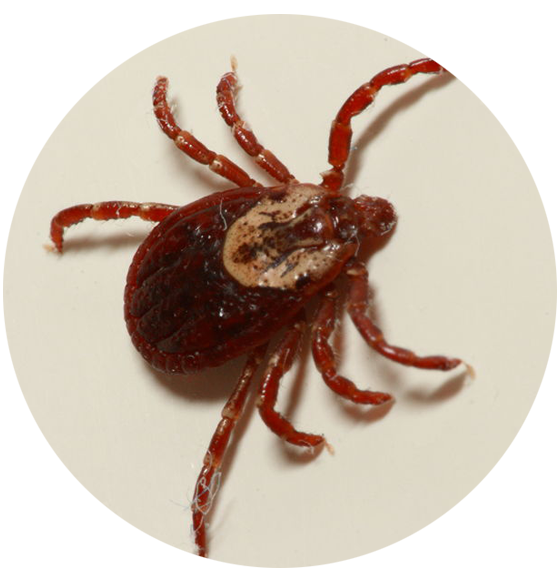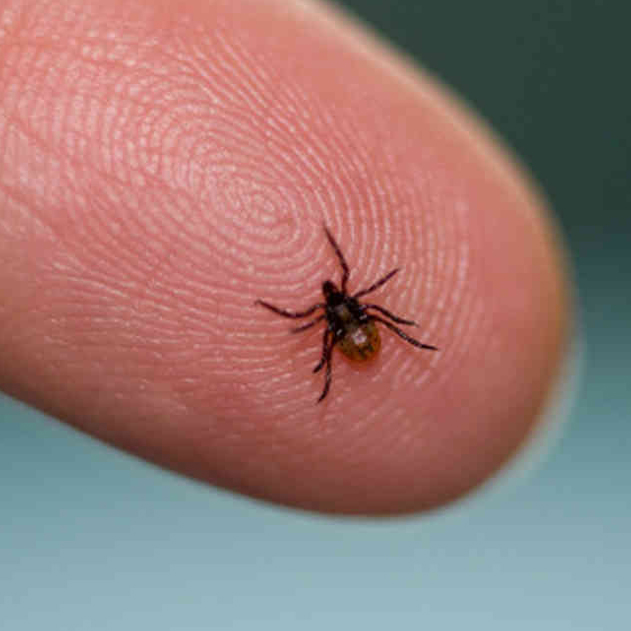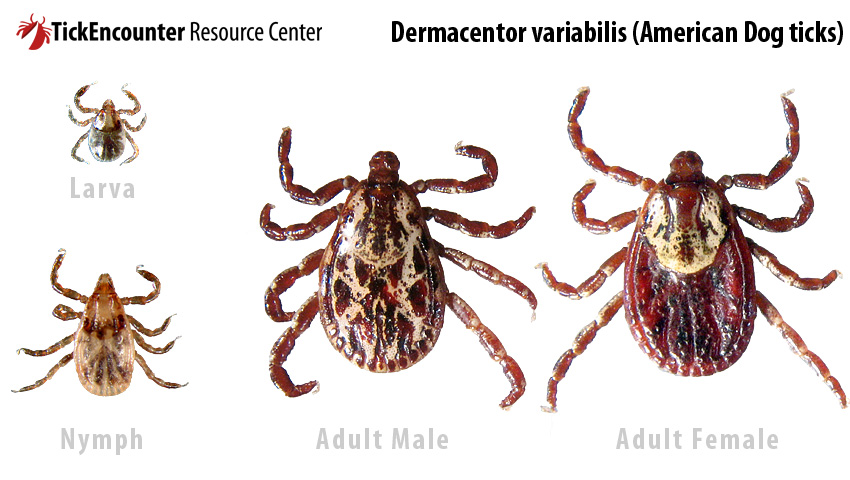
Behavior, Diet & Habits
Often found near wooded and highly vegetated areas. Some species require moisture to survive. Females and males of most species feed on blood of mammals, birds and reptiles. Each tick species does have a preferred host, although most ticks will feed on whatever blood is available to them. Thus, ticks are known to bite livestock, deer, humans, dogs and cats.
Reproduction
There are four stages in a tick’s lifecycle – egg, larval, nymphal and adult. Ticks have only six legs during their larval stage and eight legs during their nymphal and adult stages. They consume blood meals during all stages. Pathogens, or organisms that cause diseases in the animals they infect, can be passed through the stages of a tick’s life cycle.
Signs of a Ticks / Tick Infestation
Tick signs usually are the ticks themselves. Secondary signs can include medical symptoms from diseases or fluids transmitted by ticks. These can vary and are best left to a medical professional for diagnosis.
Prevention / Control
Ticks also seek safety in hidden locations within homes. Repairing any crevices or gaps and keeping grass cut short outside may discourage infestations. The disposal of all empty bird and rodent nesting materials is also necessary, as ticks will readily infest these items. Treatment for ticks is not the same as for fleas. If you suspect a tick infestation, call your local pest management professional.
Ticks found on pets or people require cautious and thorough removal. Ticks should be grasped behind the head by tweezers and pulled slowly away from the host’s skin. Crushing the tick may lead to the release of further dangerous fluids. It is important that the mouthparts be completely removed from the wound, as well. Infected areas should be thoroughly washed and disinfected. If there are medical concerns resulting from a tick or flea bite, seek medical attention immediately.



